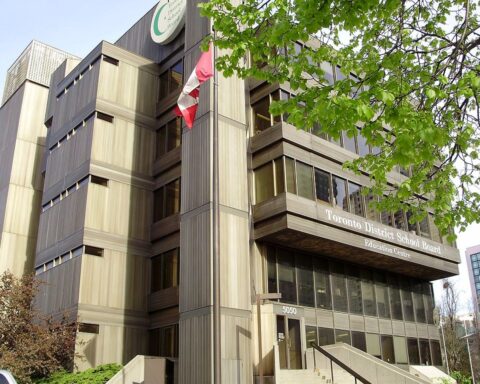The story of Canada’s embrace of different languages, cultures and peoples is not a new one. Diversity in Canada is in many ways a cornerstone of our identity, and for generations, we have largely supported government commitments to immigration, multiculturalism, and pluralism. Now there is a new story emerging about this commonly celebrated feature of our identity. At a time of rising global xenophobia, anti-immigration parties, and populist nationalism, Canada is projecting a powerful and unique global message – diversity in society can be and is good for everyone. While some repeat the normative case for diversity, the argument is sometimes more rhetorical than substantive. The recent report (April 2017), The Diversity Dividend: Canada’s Global Advantage, dives into why diversity makes economic sense and how to spell out a clear case for its many gains.
With support from the Pierre Elliott Trudeau Foundation and a number of other partners, we set out to investigate the link between diversity and economic prosperity. We conducted round table consultations with 100 Canadian business leaders across Canada, carried out interviews with industry associations, and analyzed under-used Statistics Canada data. To arrive at our findings, we used a matching methodology whereby we compared firms that were statistically identical in all factors that influence revenue, save their share of workplace ethnocultural diversity. By controlling for all other variables, we were able to isolate the effects of diversity on revenue. The term “ethnocultural diversity” is used here to refer to individuals born outside of Canada, and to those first-and-second generation immigrants who speak a language other than English or French at home.
Our findings show a pronounced diversity dividend. Specifically, we find that a 1 percent increase in ethnocultural diversity among employees is associated with an average 2.4 percent increase in revenue and 0.5 percent increase in workplace productivity across 14 industries. Businesses that welcome diversity show an increase in their economic bottom line. The sectors reaping the greatest benefits from ethnocultural diversity include business services (e.g., administrative, tech, law, and insurance firms), information and cultural industries (e.g., publishing, broadcasting, arts, and telecommunications companies), and transportation, warehousing and wholesale enterprises. These sectors experienced 6.2 percent, 3.6 percent and 4.1 percent growth in revenue, respectively, for every 1 percent increase in ethnocultural diversity in the workplace.
Manufacturers, mining, oil and gas extractors, banks, communication and utility companies, rental and leasing operators, and consumer service providers also benefit from greater ethnocultural diversity. The hard data spells out a clear case for why diversity is profitable. When we paired this data with the responses of Canadian business leaders, we found an even stronger case for the benefits and net economic effects of diversity.
The consultations with the business community, backed up by a review of the scholarly literature, showed that ethnocultural diversity in the workplace facilitates creativity and generates ideas by bringing together individuals with different lived experiences, outlooks and approaches to problem solving. A diversity of employees can invent new products and services, meet a wider range of clients’ demands, and even help companies expand into new markets, domestically and abroad. In effect, an ethnoculturally diverse workforce not only stimulates production of improved goods and services, it also connects businesses to a wider range of customers, clients, and partners.
Of course, greater workplace diversity is not without challenges. Creating an inclusive work environment that is conducive to maximizing the advantages associated with diversity may require providing certain accommodations and expending additional resources at the outset. Companies may need to make (and stick to) diversity-related commitments in their corporate culture. Inclusive hiring, training for human resources staff in recognition of international experience so they value differences, mentorship programs, measuring and understanding workplace demographics, and introducing diversity into procurement policies, are all key to creating a diverse and inclusive workplace. These adjustments may seem costly in the first instance, but they are more than justified when businesses stand to gain from them substantial performance dividends.
What does this relationship between diversity and economic prosperity mean for broader policy reform? First and foremost, there is a need to address recurring issues with foreign experience and credential recognition. In 2009, the Parliamentary Standing Committee on Citizenship and Immigration estimated the cost of not recognizing immigrants’ foreign credentials to be between $2.4 and $5.9 billion a year. We need to remove the barriers that prevent qualified but unemployed or underemployed immigrants from finding gainful employment, so we can capitalize on this stranded resource as well as alleviate the oversupply of unskilled labour.
Our conclusion is that ethnocultural diversity is good for the Canadian economy and is, in some respects, an underestimated tool for economic prosperity. But the conversation about diversity does not end there. What our research points to is that this conversation is just beginning.
While we focused on ethnocultural diversity in our study, there are many other important aspects of diversity that, if addressed, would improve the inclusiveness of society: gender, sexual orientation, age, religion, to name a few. Canada is a nation built on immigration, but more importantly, it is a nation built on difference. We have celebrated, and we should continue to celebrate the things that make us unique, while reinforcing the things that bring us together. Prioritizing pluralism not only makes us richer as a country, it makes us a stronger country.
By arrangement with Policy Options – Institute for Research on Public Policy




